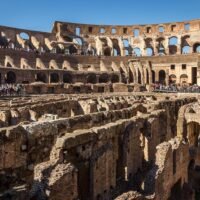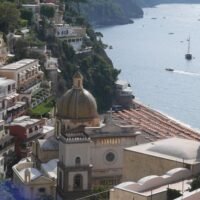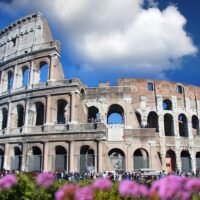Ukiyo-e exhibition at Museo di Roma Palazzo Braschi.
Rome stages a major exhibition dedicated to the world of Ukiyo-e, a genre of Japanese art that flourished from the 17th through 19th centuries.
Titled The floating world. Ukiyoe. Visions from Japan, the exhibition is curated by Rossella Menegazzo and features 150 works on loan from the E. Chiossone Museum of Oriental Art in Genoa and the Museum of Civilizations in Rome.
The exhibition includes works by masters of the Edo period, including Kitagawa Utamaro, Katsushika Hokusai, of whom the Great Wave of Kanagawa will also be presented, Keisai Eisen and the great Utagawa school with Toyokuni, Toyoharu, Hiroshige, Kuniyoshi, Kunisada.
The term ukiyo-e translates as “picture[s] of the floating world” and its artists produced woodblock prints and paintings of such subjects as female beauties; kabuki actors and sumo wrestlers; scenes from history and folk tales; travel scenes and landscapes; flora and fauna; and erotica.
View this post on Instagram
The exhibition shows 150 masterpieces of Japanese art from the Edo period, between the 17th and 19th centuries, focusing on what was the most innovative artistic strand of the time and internationally still influential today: ukiyoe.
Literally translatable as ‘pictures of the floating world’, it is a pictorial genre that originated in the Edo period (1603-1868) and includes rolls to be hung and unrolled in one’s hands, as well as large-format screens, painted with a brushstroke on silk or paper, and prints made in polychrome with a wooden matrix on paper.
What we get from the exhibition is an overview of the approximately two hundred and fifty years under the military rule of the Tokugawa, a long period of peace marked by great social, economic and artistic changes that ended with the forced reopening of the country to trade with Western powers from the mid-19th century and the Meiji Restoration that returned the Emperor to the centre of power.
The ukiyoe technique, imported from China, implemented the dissemination of images and books allowing for mass production thanks also to the talent of the hired artists. The production of prints, in fact, represented a real market, many were the artists and professionals, including painters, carvers, printers, calligraphers, who worked in ateliers under the direction of a publisher who supported the project financially, chose artists and subjects, and put the works on the market.
The great novelty that ukiyoe conveyed was the subjects, completely different from the great aristocratic wall painting in the service of the powerful and the classical schools of Kyoto. In Edo, it was the emerging citizen class that dictated tastes and fashions, composed mainly of wealthy merchants who, despite not having political power, began to afford the enjoyment of luxury and entertainment of all kinds. Ukiyo, which until then had been understood in the sense of attachment to the illusory earthly world from which to flee, according to Buddhist teaching, now took on an opposite sense of enjoyment of the fleeting moment and everything that was fashionable.
In this sense, the ukiyoe is a direct testimony of Japanese society of the time, of the customs and fashions to be worn, of natural places and the most sought-after urban views. From the images of kabuki theatre with the faces of the most successful actors to the pleasure quarters enlivened by the beauty of courtesans and equally well-known geishas, to the performances of dance, music and entertainment with all forms of art. The ukiyoe, however, behind the tale of new fashions and lifestyles, also reveals a cultural refinement testified by the diffusion of the arts understood as formative disciplines of the cultured individual, sometimes used as an expedient to circumvent government censorship that banned subjects related to courtesans and actors, hidden by artists and publishers under veiled moral and moralistic teachings.
Alongside paintings and silographs, musical instruments, board games, a soprakimono (uchikake) and fashionable women’s and men’s trousseau accessories are also exhibited, thus restoring the reality of many applied art objects depicted in ukiyoe and collected at the end of the 19th century by the first Italian artists and professionals living in Japan.
For full exhibition details see Museo di Roma website.
Feb 20 – June 23, 2024
Piazza San Pantaleo, 10 – Piazza Navona, 2 – 00186 Roma
Photo credit: Katsushika Hokusai: La [Grande] Onda presso la costa di Kanagawa dalla serie Trentasei vedute del monte Fuji 1830-1832. Silografia policroma © Courtesy of Museo d’Arte Orientale E. Chiossone.




